The History of Hawaiian Music
From the ipu to the ukulele, Hawaiian music is about storytelling
By M. Keala Milles, Jr.
Like folk music of other early civilizations, ancient Hawaiian music was a form of oral history and storytelling. Our elders or kupuna taught keiki (children) a combination of song and dance that communicated our ancestry, mythology, genealogy and emotion.
Native Hawaiians used drum instruments to keep the beat, but it wasn’t until string instruments were introduced that Hawaiian music and stories were brought to a global audience.
Mele and Hula
The Hawaiian language does not have one word that easily translates to “music,” but the basis of all Hawaiian music comes from "mele." This is a rudimentary chant that involves simple rhythms and melodies.
Beautiful in its own right, mele usually accompanies the traditional dance known as hula. Combining the two has proven to be a lovely and effective storytelling tool passed down from generation to generation.
|
Gourd Instruments The original instruments of the Hawaiian Islands were developed in order to better support mele and hula. The ipu (single gourd) and the ipu heke (double gourd) are large hand drums made from hollowed-out gourds. These simple, but beautifully decorated drums helped to establish rhythm through percussive movements. |
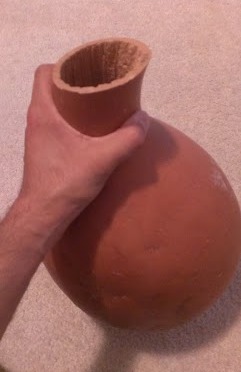 Hula dancers preferred the single gourd ipu because of its mobility |
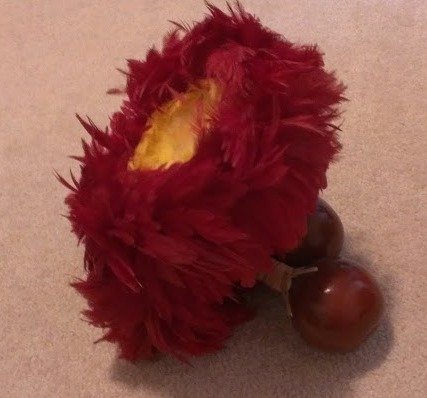 The ’uli ’uli or rattle instrument |
Native Hawaiians also used gourds to make, the ’uli ’uli, or rattle instrument. Some of these were quite festive and featured royal red and yellow feathers. These rattles make a sound similar to that of the maraca from Latin music. |
|
Non-Gourd Instruments Non-gourd instruments included the, ’ili ’ili, smooth, water-worn stones similar to the castanets of Latin music. Two pairs of stones are needed; in each hand, one stone is kept between the thumb and index finger, the other stone is placed in palm. When the hand is opened and closed it makes a clacking noise. Introduced from Tahiti, the pahu is another kind of hand drum covered with sharkskin and more closely resembling drums of the modern Western world. |
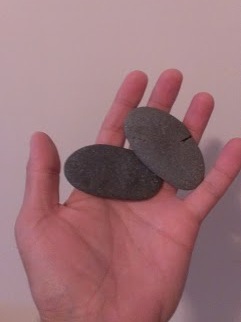 The ’ili ’ili or river rocks make a clacking sound |
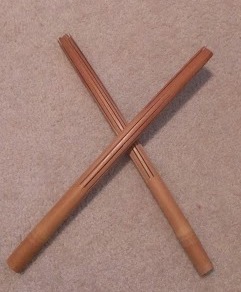 Pu’ili sticks |
The pu’ili, a pair of hollowed bamboo sticks, whose sound is produced by tapping them on different parts of the body or the ground is another popular hula instrument. The ka’eke’eke are also bamboo tubes which were cut to varying lengths in order to produce different tones. |
|
Other traditional instruments that were less common include the kuolokani (a larger drum), the ni’au kanu (a type of jew harp), and the ‘ohe hano ihu (loosely translated to “nose flute.” |
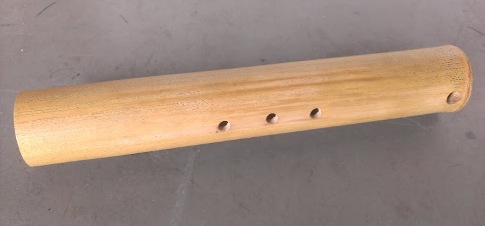 The Hawaiian nose flute |
Early Hawaiian music is mostly categorized by these practical instruments, but the evolution of Hawaiian music accelerated when settlers from all over the world introduced stringed instruments to the islands.
The Introduction of Stringed Instruments
Mexican vaqueros brought the guitar to the islands and the Portuguese brought an instrument called the braguinha, which later became the ukulele. The Portuguese also brought steel guitars, which the Hawaiian people adapted to suit their musical styles. Families would then “slack” the strings, which led to Hawaiian slack-key guitar, a sound that is uniquely Hawaiian.
Through the history of Hawaiian music, from gourd to string, the goal has been for stories to reach the next generation. Today hula and mele continues to celebrate, honor, and remember stories from the past.
Have you played any Hawaiian instruments?
Related Articles
Maui Ukulele Makers Create Musical Connections
Mele Music Offers Mid-priced Ukuleles
Hobbyist Crafts Ukuleles for Charity
Return to the top of "The History of Hawaiian Music"
Return to the "Hula" Page
Back to the Hawaiian-Culture-Stories.com Home Page